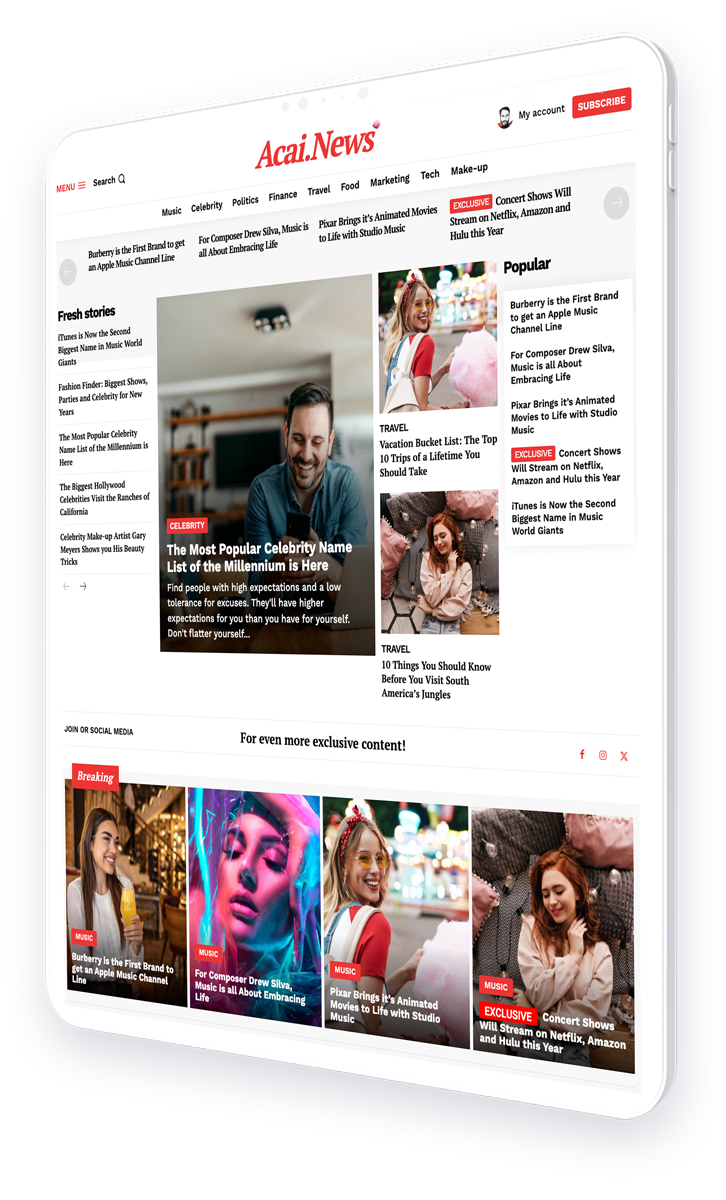Why more companies are adopting AI for corporate journalism and thought leadership
In the rapidly evolving landscape of digital media, companies are increasingly turning to innovative strategies to engage their audiences. One such strategy is the integration of brand journalism with artificial intelligence (AI). This combination is proving to be a game-changer for corporate magazines, offering a fresh approach to storytelling and thought leadership. In this article, we will explore why more companies are adopting AI for corporate journalism, the benefits it brings, and how it is shaping the future of brand communication.
The Rise of Brand Journalism
Brand journalism is a strategic approach that combines the principles of journalism with brand storytelling. It focuses on creating content that is informative, engaging, and aligned with the brand’s values and mission. Unlike traditional advertising, brand journalism aims to build trust and credibility by providing valuable insights and stories that resonate with the audience.
In recent years, brand journalism has gained significant traction as companies recognize the need to connect with their audiences on a deeper level. By producing high-quality content that informs and entertains, brands can establish themselves as thought leaders in their respective industries.
The Role of AI in Corporate Journalism
Artificial intelligence is revolutionizing the way content is created, distributed, and consumed. In the context of corporate journalism, AI offers several advantages that enhance the effectiveness of brand storytelling.
- Content Creation: AI-powered tools can generate content at scale, allowing companies to produce a steady stream of articles, blog posts, and social media updates. These tools can analyze data, identify trends, and craft compelling narratives that resonate with the target audience.
- Personalization: AI enables brands to deliver personalized content experiences by analyzing user behavior and preferences. This ensures that the right message reaches the right audience at the right time, increasing engagement and conversion rates.
- Data-Driven Insights: AI can process vast amounts of data to provide valuable insights into audience behavior, content performance, and market trends. This data-driven approach allows brands to make informed decisions and optimize their content strategies for maximum impact.
Case Studies: Successful Integration of AI in Brand Journalism
Several companies have successfully integrated AI into their brand journalism efforts, reaping significant benefits in terms of engagement and brand perception.
Case Study 1: The Washington Post
The Washington Post has been at the forefront of using AI in journalism. Their AI-powered tool, Heliograf, has been instrumental in covering large-scale events such as the 2016 Rio Olympics and the 2016 U.S. presidential election. Heliograf can generate short news updates and alerts, freeing up journalists to focus on more in-depth reporting.
This approach has not only increased the volume of content produced but also improved the speed and accuracy of reporting. As a result, The Washington Post has seen a significant increase in readership and engagement.
Case Study 2: Forbes
Forbes has embraced AI to enhance its content creation process. The company uses an AI-driven platform called Bertie, which assists journalists in generating article ideas, headlines, and even full-length articles. Bertie analyzes data from various sources to identify trending topics and suggest relevant content angles.
This integration of AI has allowed Forbes to produce a higher volume of content while maintaining quality and relevance. The result is a more engaged audience and a stronger brand presence in the digital space.
Benefits of AI-Driven Brand Journalism
The integration of AI in brand journalism offers numerous benefits that contribute to the success of corporate magazines.
- Efficiency: AI automates repetitive tasks, allowing content creators to focus on more strategic and creative aspects of storytelling. This leads to increased productivity and faster content delivery.
- Scalability: AI-powered tools can handle large volumes of content, making it easier for brands to scale their content efforts without compromising quality.
- Consistency: AI ensures consistency in tone, style, and messaging across all content channels, reinforcing the brand’s identity and values.
- Audience Engagement: Personalized content experiences driven by AI lead to higher levels of audience engagement and loyalty.
Challenges and Considerations
While the benefits of AI-driven brand journalism are significant, there are also challenges and considerations that companies must address.
- Ethical Concerns: The use of AI in journalism raises ethical questions about transparency, bias, and accountability. Companies must ensure that AI-generated content adheres to ethical standards and maintains journalistic integrity.
- Data Privacy: AI relies on data to deliver personalized experiences. Companies must prioritize data privacy and security to protect user information and build trust with their audience.
- Human Oversight: While AI can automate many aspects of content creation, human oversight is essential to ensure quality, accuracy, and creativity. A balanced approach that combines AI capabilities with human expertise is crucial for success.
The Future of Brand Journalism and AI
The future of brand journalism lies in the seamless integration of AI technologies. As AI continues to evolve, it will enable brands to create more sophisticated and immersive content experiences. Here are some trends to watch for:
- Interactive Content: AI will enable the creation of interactive and immersive content experiences, such as virtual reality (VR) and augmented reality (AR), that engage audiences in new and exciting ways.
- Voice-Activated Content: With the rise of voice-activated devices, AI will play a crucial role in delivering voice-based content experiences that cater to the growing demand for hands-free interaction.
- Predictive Analytics: AI-powered predictive analytics will allow brands to anticipate audience needs and preferences, enabling them to deliver timely and relevant content that resonates with their target audience.
Conclusion: Embracing the Power of AI in Brand Journalism
In conclusion, the combination of brand journalism and AI is a powerful tool for companies looking to enhance their corporate magazines and establish thought leadership. By leveraging AI technologies, brands can create compelling content that resonates with their audience, drives engagement, and builds trust.
As more companies recognize the potential of AI-driven brand journalism, it is essential to address the challenges and ethical considerations associated with its use. By adopting a balanced approach that combines AI capabilities with human expertise, brands can unlock new opportunities for storytelling and communication.
In the ever-evolving digital landscape, embracing the power of AI in brand journalism is not just an option but a necessity for companies seeking to stay ahead of the competition and connect with their audiences in meaningful ways.
For more insights on the intersection of AI and journalism, you can explore resources from Nieman Lab, a leading authority on journalism innovation.




